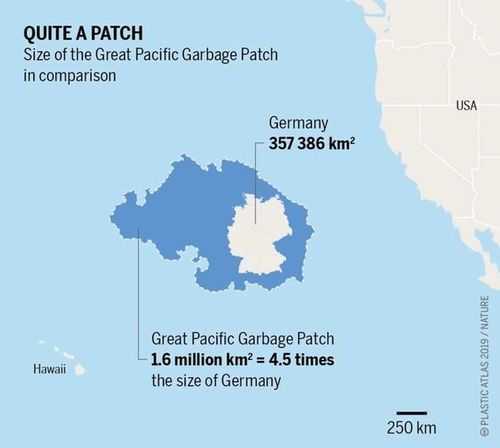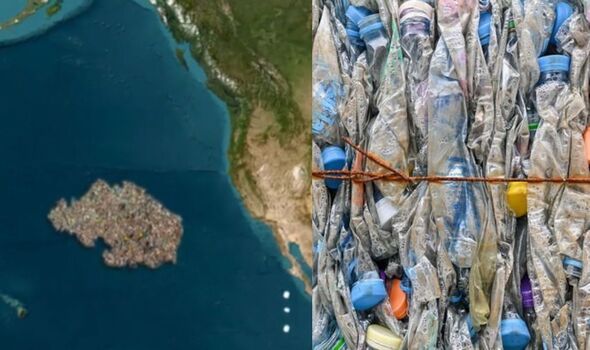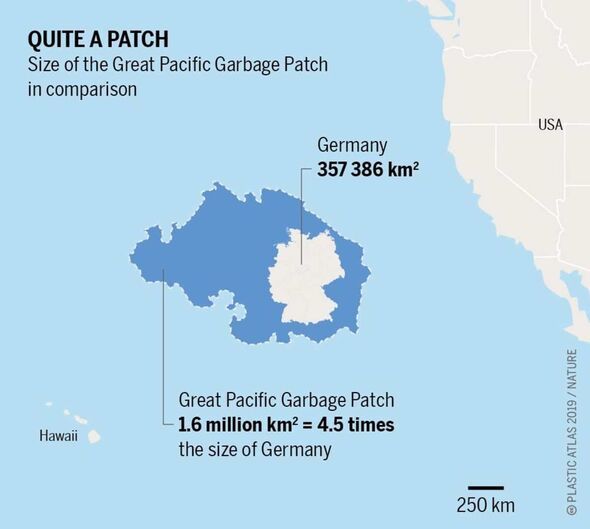

An estimated 1.15 to 2.41 trillion tonnes of plastic enter the oceans each year and its of the waters have impacted at least 267 species worldwide.
This includes 44% of all seabird species, 43% of all and 86% of all sea turtle species specifically, through ingestion, starvation, drowning and entanglement.
More than half of this plastic is less dense than water and incredibly resilient to the marine , meaning it floats and can be transported over substantial distances.
In fact, so much has amalgamated in the that a new island has been born, made of an estimated 1.8 trillion pieces of plastic.
The Great Pacific Garbage Patch (GPGP) has an estimated surface area of just under 618,000 square miles - three times the size of France and twice that of Texas - which weighs an estimated 100,000 tonnes, equivalent to more than 740 Boeing 777s.

Floating halfway between California and , the GPGP is the largest of five offshore plastic accumulation zones across the world's oceans.
To formulate the size of the island, a team of scientists conducted an elaborate sampling method, involving a fleet of 30 boats, 652 surface nets and two flights over the patch to gather aerial images.
A total of 1.8 trillion plastic pieces were estimated to be floating in the patch - equivalent to 250 pieces of debris for every human being. However, even this substantial figure is a mid-range estimate and it could in fact contain around 3.6 trillion pieces.
Some of the plastic present is over 50 years old and includes items (and fragments of items) including plastic lighters, tooth brushes, water bottles, and even phones.
Research indicates that the patch is continuing to grow at a rapid rate. It is believed to have increased "10-fold each decade" since 1945, according to a 2014 study.
Once plastic enters the marine food chain, there is a chance that it will also contaminate the human food chain. Through a process called bioaccumulation, chemicals will enter the body of the animal first feeding on the plastic, which will then pass on to its predator.
According to a study conducted by The Ocean Clean Up and Deloitte, annual economic costs due to marine plastic are estimated to be between $6 - 19 billion (£4.6 - 15 billion), stemming from its impact on , fisheries and aquaculture, and (governmental) cleanups.
As more plastics are discarded into the environment, which then makes its way into rivers before entering the seas and oceans, microplastic concentration in the patch will continue to increase.
The Ocean Cleanup project's goal is to remove half of the plastic pollution by 2027 using floating barriers anchored to the seabed.
A similar patch of floating plastic debris is found in the - the North Atlantic garbage patch - which was first documented in 1972, which also contributes to environmental damage to marine ecosystems and species. However, there have only been a few awareness and clean-up efforts, namely by and The Ocean Cleanup, as most efforts have been focused on the GPGP.